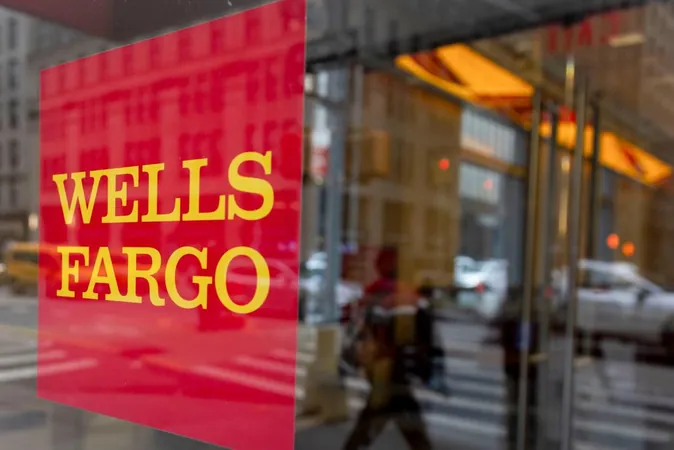
Wells Fargo Sees Profit Surge Amid Market Challenges
2025-01-15
Author: Ming
Wells Fargo & Company (NYSE:WFC) has reported an impressive 47% increase in net income, declaring a profit of $5.08 billion for the fourth quarter of 2024. This surge is particularly compelling given the backdrop of fluctuating market conditions. The bank's earnings per share (GAAP EPS) also exceeded expectations, reaching $1.43 compared to the anticipated $1.34, while revenues hovered at $20.38 billion—slightly less than the expected $20.59 billion.
One noteworthy aspect of Wells Fargo's earnings report is its net interest income, which saw a decline of 7% year-over-year, amounting to $11.84 billion. This drop can be attributed to changes in deposit mix and pricing, alongside the impacts of reduced rates on floating-rate assets and lower loan balances. However, the bank's strong performance in investment banking and wealth management sectors helped offset these losses, highlighting a strategic pivot in revenue sources.
The increase in profits was driven by a rebound in deal-making activities, with higher fees from investment banking significantly bolstering the bank's earnings. Analysts are optimistic about the future, as Wells Fargo expects a potential jump of up to 3% in net interest income for 2025, reflecting positive trends in underlying business fundamentals despite current headwinds in the banking sector.
In a broader context, other financial institutions are also positioning themselves for enhanced shareholder value. For instance, Citigroup has announced plans to buy back $20 billion of its stock, indicating a strong confidence in its market performance and capital management strategy.
Overall, while challenges like rising mortgage rates—which recently topped 7%—persist in the U.S. housing market, Wells Fargo's latest financial performance stands out as a beacon of resilience, positioning the bank favorably amid evolving economic conditions. As investors analyze these results, the key question remains: how will Wells Fargo navigate the complex landscape of banking in the year to come?

 Brasil (PT)
Brasil (PT)
 Canada (EN)
Canada (EN)
 Chile (ES)
Chile (ES)
 Česko (CS)
Česko (CS)
 대한민국 (KO)
대한민국 (KO)
 España (ES)
España (ES)
 France (FR)
France (FR)
 Hong Kong (EN)
Hong Kong (EN)
 Italia (IT)
Italia (IT)
 日本 (JA)
日本 (JA)
 Magyarország (HU)
Magyarország (HU)
 Norge (NO)
Norge (NO)
 Polska (PL)
Polska (PL)
 Schweiz (DE)
Schweiz (DE)
 Singapore (EN)
Singapore (EN)
 Sverige (SV)
Sverige (SV)
 Suomi (FI)
Suomi (FI)
 Türkiye (TR)
Türkiye (TR)
 الإمارات العربية المتحدة (AR)
الإمارات العربية المتحدة (AR)